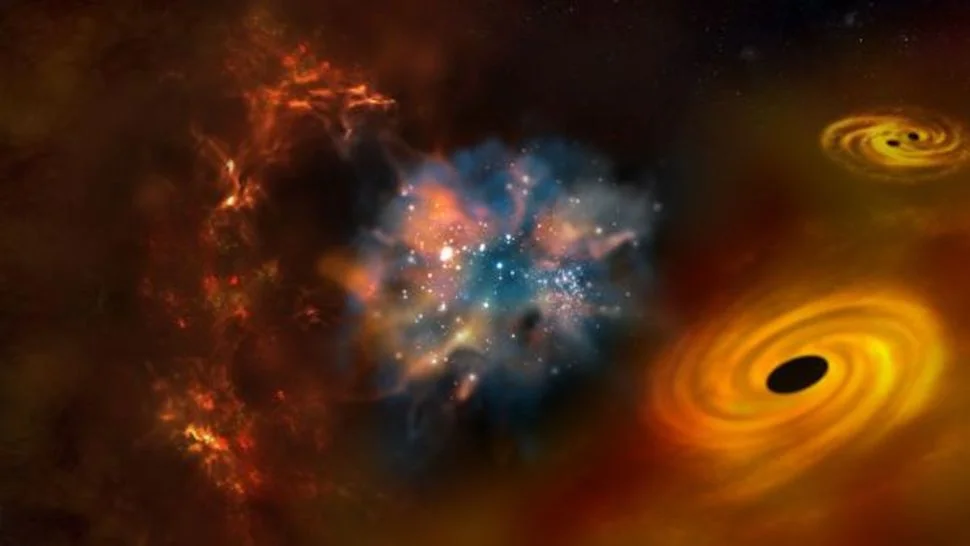The universe always holds secrets that excite our curiosity. As we currently understand it, the fabric of the universe consists of three main components: “normal matter”, “dark energy” and “dark matter”. But new research turns this established model on its head. Rajendra Gupta is an experienced physics professor who is not afraid to question the status quo. With his years of research, Gupta is changing our understanding of the universe.
Gupta at the University of Ottawa conducted research that suggests we may not need dark matter or dark energy to explain how the universe works. This bold statement is causing excitement in the scientific community.
“Tired light” and CCC theory
At the heart of Gupta’s research is a model that combines two theories: covariate coupling constants (CCC) and “tired light” (TL). We have always been taught that the fundamental constants of nature, such as the speed of light or the charge of the electron, do not change. But what if it still hasn’t been fixed?
CCC theory suggests that these constants may actually vary throughout the universe. If so, it could transform our understanding of everything from the smallest particles to the largest galaxies.
There’s also the idea of Tired Light. We usually think of the redshift (spreading of light into longer, redder wavelengths) of light from distant galaxies as occurring due to the expansion of the universe.
But the TL model offers a different perspective: Perhaps light loses energy over very long distances. This loss of energy would lead to a redshift without the expansion of the universe.
So what happens when you combine these two theories? The CCC+TL model aims to provide a new basis for understanding cosmic events. Given that constants can change and light can lose energy over time, this model offers alternative explanations for observations that have baffled scientists for decades.
Why do most scientists believe dark matter is real?
So why do we think dark matter is real if we can’t see it? In the 1930s, an astronomer named Fritz Zwicky noticed that the galaxies in the cluster were moving in a way that did not coincide with the apparent mass. Something invisible pressed down on them. Since then, more evidence has emerged, such as how galaxies rotate; they just rotated faster in the case of visible matter.
According to most theories, dark matter plays a major role in the functioning of the universe. It appears to hold galaxies together by acting as an invisible glue.
Without it, galaxies may not have enough mass to remain intact. It also affects how light moves through space, bending it in ways that help us determine where dark matter is hiding.
Asking the question about the necessity of dark matter
For many years, dark matter has been the main explanation for the behavior of galaxies and the motion of stars. It is believed to make up about 27% of the universe, with ordinary matter comprising less than 5% and the remainder dark energy. But Gupta’s findings deal a blow to this model.
“The results of the research confirm our previous work, which suggested that the universe is 26.7 billion years old and rejected the need for dark matter,” he explains. “Contrary to standard cosmological theories in which the accelerating expansion of the universe is explained by dark energy, our findings show that this expansion is not caused by dark energy but by the weakening of the forces of nature,” Gupta continues.
Redshifts and space observations
Much of Gupta’s research focuses on “redshifts,” where light is stretched toward the red end of the spectrum as it moves through space. By analyzing data on how galaxies are distributed at low redshift and patterns observed at high redshift in the early universe, he argues against the existence of dark matter.
Gupta confidently concludes: “There are many papers questioning the existence of dark matter, but mine is the first paper, to my knowledge, that rules out its cosmological existence but is consistent with important cosmological observations that we have managed to confirm.” .
What does all this mean?
If the CCC+TL model is correct, it could overturn much of our current understanding. This could offer new explanations for things like cosmic microwave background radiation or the formation and evolution of galaxies. Gupta’s theory challenges the widely accepted Big Bang theory and could open new avenues of thought in cosmology.
Critics point out that there is ample evidence supporting existing models, such as the constancy of physical laws and the expansion of the universe. The CCC+TL model should provide testable predictions that can be verified or refuted by observations and experiments.
Dark matter, the Big Bang and the next steps
So where do we go next?
Researchers are working hard to find ways to test the CCC+TL model. They observe distant stars, measure cosmic radiation, and analyze vast amounts of data. As technology advances, especially with more powerful telescopes and detectors, we can gather the evidence we need to confirm or challenge these new theories.
After all, trying to understand the universe is like putting together a giant puzzle without knowing the final picture. Each new piece or idea helps us see a little more, even if it means rethinking the parts we thought we understood.
Whether the CCC+TL model is an important part of cosmology or leads us to other discoveries, it is all part of an exciting journey to learn about the cosmos. The full text of the research has been published Astrophysical Journal.
Source: Port Altele
